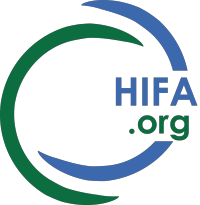Dear HIFA-Zambia colleagues,
Heppy new year! I was interested to see this paper, thanks to John Eyers, HIFA's literature search expert. The impact of counterfeit medicines is hard to measure directly, but the authors of this study have used a simulation model that suggests substandard antimalarials are responsible for many deaths. Is this something you have seen in your experience?
CITATION: Impact of substandard and falsified antimalarials in Zambia: application of the SAFARI model.
BMC Public Health. 20(1):1083, 2020 Jul 09.
Jackson KD; Higgins CR; Laing SK; Mwila C; Kobayashi T; Ippolito MM; Sylvia S; Ozawa S et al.
ABSTRACT
Background: Many countries are striving to become malaria-free, but global reduction in case estimates has stagnated in recent years. Substandard and falsified medicines may contribute to this lack of progress. Zambia aims to eliminate their annual burden of 1.2 million pediatric malaria cases and 2500 child deaths due to malaria. We examined the health and economic impact of poor-quality antimalarials in Zambia.
Methods: An agent-based model, Substandard and Falsified Antimalarial Research Impact (SAFARI), was modified and applied to Zambia. The model was developed to simulate population characteristics, malaria incidence, patient care-seeking, disease progression, treatment outcomes, and associated costs of malaria for children under age five. Zambia-specific demographic, epidemiological, and cost inputs were extracted from the literature. Simulations were run to estimate the health and economic impact of poor-quality antimalarials, the effect of potential artemisinin resistance, and six additional malaria focused policy interventions.
Results: We simulated annual malaria cases among Zambian children under five. At baseline, we found 2610 deaths resulting in $141.5 million in annual economic burden of malaria. We estimated that elimination of substandard and falsified antimalarials would result in an 8.1% (n = 213) reduction in under-five deaths, prevent 937 hospitalizations, and realize $8.5 million in economic savings, annually. Potential artemisinin resistance could further increase deaths by 6.3% (n = 166) and cost an additional $9.7 million every year.
Conclusions: Eliminating substandard and falsified antimalarials is an important step towards a malaria-free Zambia. Beyond the dissemination of insecticide-treated bed nets, indoor residual spraying, and other malaria control measures, attention must also be paid to assure the quality of antimalarial treatments.
Best wishes, Neil
Working together for health in Zambia - Join HIFA-Zambia: http://www.hifa.org/forums/hifa-zambia
HIFA-Zambia profile: Neil Pakenham-Walsh is the coordinator of HIFA-Zambia and the HIFA campaign (Healthcare Information For All - www.hifa.org ). Twitter: @hifa_org FB: facebook.com/HIFAdotORG neil@hifa.org

